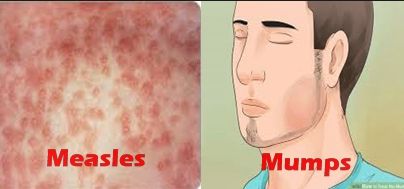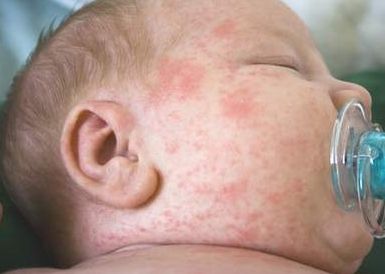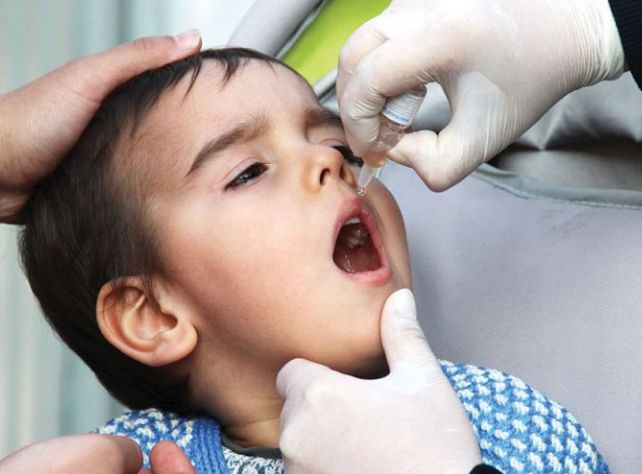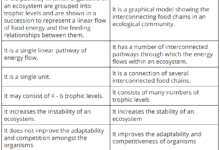Viruses cause many viral diseases in man, animals, and plants. These viral diseases are discussed here completely with their symptoms and methods to control or cure.
Viral Diseases in Animals (Humans)
Animal viral diseases are caused by many types of viruses.
- Diseases by Rhinovirus (Virus of the Nose and Throat)
- Diseases by Paramyxovirus
- Disease by a Pox virus
- Diseases by Arbovirus (Arthropod born viruses)
- Disease by Retrovirus (Tumor viruses)
- Diseases by Rhabdovirus (Virus of Saliva)
- Disease by Polio Virus
- Disease by Herpes virus
1. Viral Diseases by Rhinovirus
Cold
It is the infection of the upper part of the respiratory tract, caused by rhinovirus.
Symptoms: Pain in throat and chest congestion, flu, cough, and sometimes fever.
Control: Immunization is the method of control; due to various strains it is difficult.
 Influenza
Influenza
It is an infection of the lower part of the respiratory tract. This disease is caused by a virus called myxovirus influenza.
Symptoms: Pain in throat, headache, pain in arms and back fever, and pneumonia may occur.
Control: Use of Antibiotics, Contact with the patient should be avoided, sudden changes in temperature should be avoided, and Immunization.
2. Viral Diseases by Paramyxovirus
Mumps and Measles viruses belong to Paramyxovirus. They are large and RNA-enveloped viruses.
Mumps
It is a contagious disease. Mumps is widely distributed, and therefore, It is not a fatal disease. About 60% of adults are immune to it. It is a disease in which salivary glands are infected by the virus.
Symptoms: Salivary glands become swollen due to infection, Pain in the jaw muscles, headache, indigestion, and fever.
 Measles
Measles
It is a common disease in children and adults. It occurs all over the world. This disease develops immunity in its victims.
Symptoms: In this disease, small reddish pustules are developed on the skin. Other symptoms are pain and fever.
Control: Use of antibiotics in the effective treatment of this disease and vaccination.
3. Disease by Pox Virus
Small Pox
Smallpox is caused by the pox virus. It is a DNA-enveloped virus. Smallpox is an ancient disease. It occurred in China as an epidemic in the 12th century B.C. Smallpox was a common disease in the world before the early twentieth century.
Symptoms: Raised vesicles are formed on the body. These vesicles are fluid-filled. Later these vesicles change into pustules. These pustules later form pitted scars. These scars are called pocks.
Control: In 1950, Immunization or vaccination of smallpox started. This immunization and other control measures have decreased this disease. It is still present in third-world countries. Many people are affected by this disease in these countries.
4. Viral Diseases by Arbovirus
(Yellow Fever, Encephalitis, and Dengue)
These are viral diseases called arboviruses. These viral diseases are arthropod-borne i.e. they live in the body of insects and other arthropods, from their body these ruses are transferred into man’s body and cause disease.
 Yellow fever:
Yellow fever:
The virus of yellow fever is transferred from the body of Culex mosquitoes. These viruses attack the liver, kidneys, and blood capillaries. Fever and jaundice are the main symptoms, so the disease is called yellow fever.
Encephalitis and Dengue diseases are also dangerous diseases, caused by viruses. These viruses are transferred into the body of a man from Aedes mosquitoes. They damage the liver, blood vessels, and nervous system. Due to these diseases, death may occur.
Control:
- Use of antibiotics.
- Eradication of mosquitoes which are involved in the spreading of disease.
5. Diseases by Retrovirus:
Tumor Viruses
The retroviruses are RNA tumor viruses, that cause tumor formation in many animals. The most common virus of this group is HIV, which causes AIDS (acquired immune deficiency syndrome) in human beings. It was discovered in 1985.
Symptoms: Immune system of the body is destroyed other diseases like pneumonia may attack the body. Blood is infected, and also causes skin cancer.
Control: Blood should be tested before donation, Chemotherapy, and radiotherapy.
6. Diseases by Rhabdovirus: (Saliva virus)
 Rabies
Rabies
Rhabdovirus causes Rabies disease. It was discovered in the 19th century by Louis Pasteur. This disease is also called hydrophobia. Usually, it is found in dogs and foxes. The viruses are transferred into the body of the man by biting the mad dog. The virus is present in the saliva of animals.
Symptoms: In this disease nervous system is affected. Salivary glands are infected, and Pain in the muscles. The patient feels fairness by seeing water and becomes mad, so the disease is called Hydrophobia.
Control: Vaccination is the control of the disease.
7. Disease by Polio Virus
Polio
Poliomyelitis is caused by the poliovirus. It is present all over the world. It occurs mostly in childhood. The age of infection varies with social and economic factors. The polio virus is the smallest know virus. It contains RNA in a spherical Capsid.
Symptoms: Indigestion, fever, pain in muscles, stiffness of back muscles, and legs become paralyzed.
Control: Vaccination of Babies and use of Antibiotics.
8. Diseases by Herpes virus
Herpes Simplex
It is caused by the Herpes virus. Herpes simplex is a DNA virus. It is a naturally occurring disease of mankind.
Symptoms: It forms vascular lesions in the epithelial layers of the ectodermal tissues. This disease occurs in the mouth, on the lips, and at other skin sites.
Viral Diseases in Plants
Viruses attack many important plants and cause diseases in them, so the crop is badly damaged and yield is greatly reduced. Some plants are tobacco, tomato, sugar cane, wheat, corn, rice, beet, etc.
Tobacco mosaic virus disease is very common. The virus is called TMV (Tobacco mosaic virus). In this disease white, yellow, and green spots are produced on leaves. It looks like a mosaic. The disease in plants spreads in two ways:
1. Horizontal transmission:
In this infection, the plant is infected from sources through insects or injured pans.
2. Vertical transmission:
In this infection, the plants get the virus form the parent plant by inheritance.
Control of Viral Diseases:
There is no proper control of viral diseases in plants, but some methods are as follows:
The best control is the use of resistant varieties, i.e. Strong and healthy varieties. Clean and free of disease seeds should be used for the cultivation of crops.




